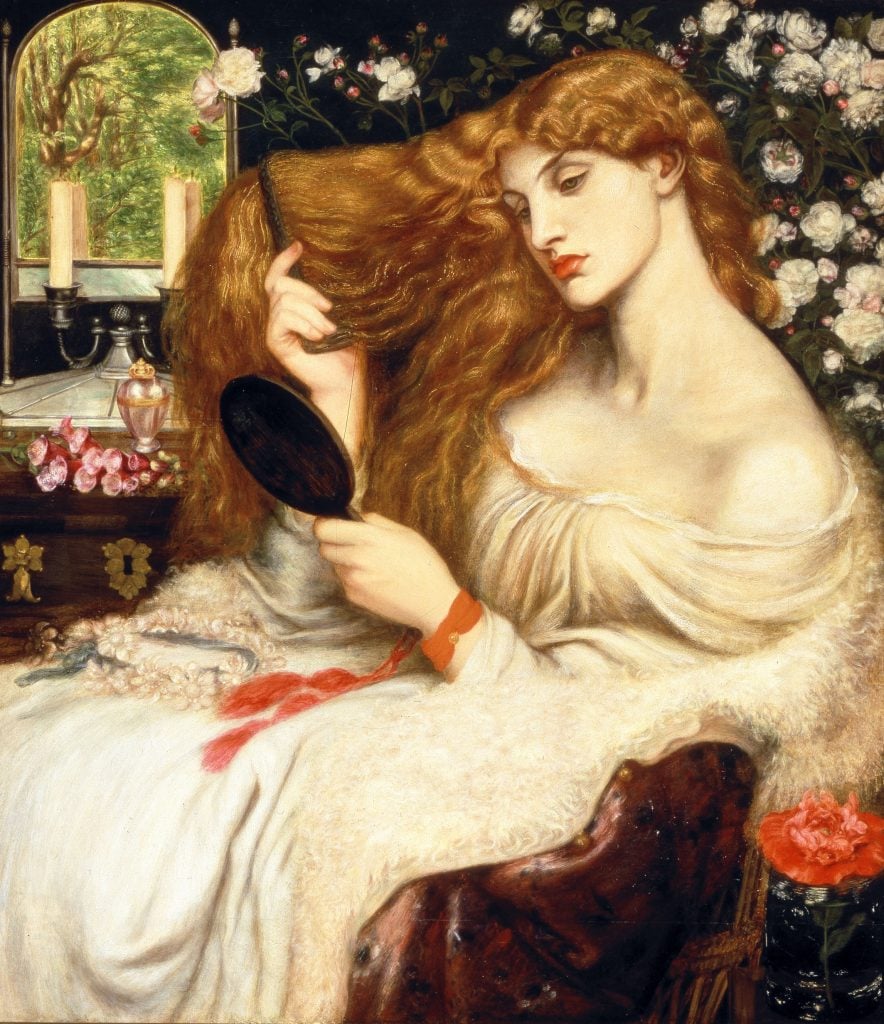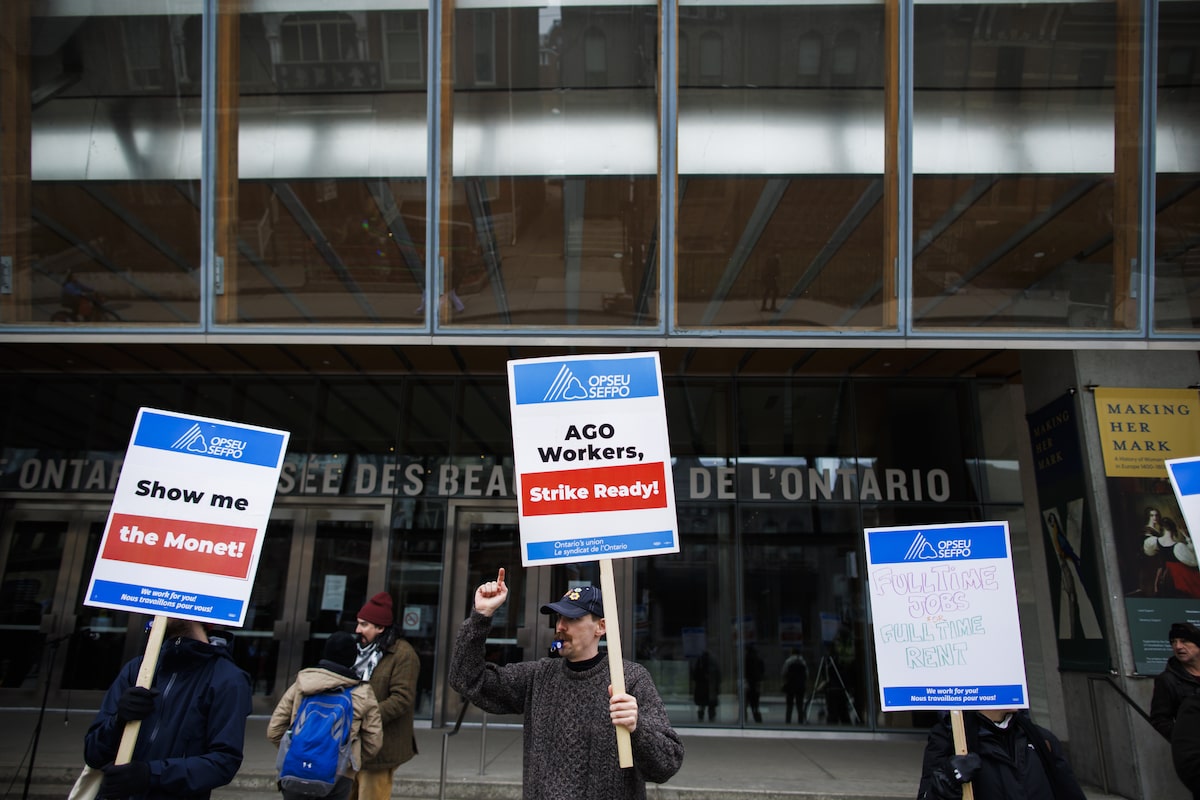Art
Curators Scour Capitol for Damage to the Building or Its Art – The New York Times

Initial reports indicate that despite multiple incidents of vandalism, smashed windows and broken doors, major damage to the building itself or its artworks was avoided.
Barbara A. Wolanin did not leave her TV much on Wednesday afternoon, watching terrified, she said, as hundreds of Trump rioters rushed into the Rotunda of the U.S. Capitol building where eight large, framed historical paintings hang.
She once was curator for the Architect of the Capitol, the office that preserves and maintains the building’s art and architecture. She knew much better than most the horrific possibilities that were presenting themselves.
What if rioters slashed John Trumbull’s “Declaration of Independence,” one of the large paintings from the early 1800s that depict the American fight for freedom? Or smashed the bronze bust of the Rev. Dr. Martin Luther King Jr.?
“All the art in the Capitol is basically on view,” said Dr. Wolanin, 77, who served as Curator for the Architect of the Capitol from 1985 until she retired in 2015. “There aren’t a lot of things hidden away.”
For nearly four hours, the collection she had spent more than 30 years caring for was at the mercy of a mob that broke into rooms on the south side of the Capitol (including House Speaker Nancy Pelosi’s office), smashed windows and then marched through the National Statuary Hall, waving American, Confederate and “Trump Is My President” flags.
Their time in the building is now represented by the damage they left behind. A 19th-century marble bust of former President Zachary Taylor was flecked with what appeared to be blood. A picture frame was left lying on the floor, the image gone.
The photos and videos, some of them taken inside by the rioters themselves, were startling. One man crammed a framed photo of the Dalai Lama into his backpack, while another smoked marijuana in a room with maps of Oregon on the wall. A man in a leather jacket ripped up a scroll with Chinese characters.
“Yeah look at all this fancy furniture they have!” one man in a winter parka and red hat said.
By the time the Capitol Police had secured the building around 6 p.m., windows and doors at the historic building had been broken, offices had been ransacked and some furniture had been damaged, overturned or looted.
Detailed damage assessments from the Architect of the Capitol or the U.S. Capitol Police have yet to be released. But the singular works of art that curators consider the treasures of the building did not appear to have suffered any major damage.
It could have been much worse, Dr. Wolanin said.
Her greatest concern was the large-scale, 18-foot paintings by Trumbull and other artists that depict scenes from the republic’s founding in the Rotunda, and the dozens of statues that fill the National Statuary Hall to the south.
Safely inaccessible was “The Apotheosis of Washington,” a fresco on the Rotunda ceiling that shows the nation’s first president flanked by Liberty, Victory, Science, War and other allegorical figures.
Particularly vulnerable was the National Statuary Hall to the south of the Rotunda, which contains 35 statues of prominent Americans, part of a collection of 100 statues at the Capitol — two from each of the 50 states — that memorialize such notable figures as Samuel Adams, Rosa Parks and Thomas Edison.
The Capitol’s collection of paintings also includes work by artists such as Thomas Crawford and Constantino Brumidi, with a mix of portraits and landscapes. Original paintings of George Washington, such as one in the Old Senate Chamber, are some of the most treasured.
The building itself is a work of art, a paragon of Neoclassical architecture designed by Dr. William Thornton in the late 1700s and completed by the Boston architect Charles Bulfinch in 1826. But at the height of the riot, people were scaling its exterior using ropes, while others used poles as battering rams to break open an entrance. Inside, a pro-Trump loyalist posed on the Senate dais while another hung from the balcony in the chamber.
The history of the Capitol as a place is captured in the Hall of Capitols corridor of the House wing, in a series of murals by Allyn Cox. Eight milestone events from the building’s first 65 years and portraits of the nine men who were appointed Architect of the Capitol between 1793 and 1995 adorn the ceilings.
Dr. Wolanin said this was the first time the Capitol’s collection had been threatened on this scale. Though individual pieces had suffered “a tiny bit” of damage in the past, as when a gunman broke into the building in 1998 and killed two police officers and injured a female tourist before being captured, the last breach by a large, violent group of people was during the War of 1812 more than 200 years ago, when invading British troops burned down the building.
“They had no respect for any of these things,” Dr. Wolanin said of the mob that ransacked the building on Wednesday. “That’s what’s really scary.”
On Thursday, some historical preservationists discussed the damage, including the question of whether some of it should be left as a historical marker of the day.
Anthony Veerkamp, a former director of policy development for the National Trust for Historic Preservation, said some of the physical damage should be preserved “as a reminder that our monuments, our institutions, and our values are all vulnerable, and must be constantly cared for.”
But he noted that it was important to do in a way that did not grant the rioters hero status.
“It’s important to not inadvertently create a shrine that appears to commemorate the insurrectionists,” he said.
Art
Art Bites: Millais's Muse Fell Ill After Posing for 'Ophelia' – artnet News
What’s the deal with Leonardo’s harpsichord-viola? Why were Impressionists obsessed with the color purple? Art Bites brings you a surprising fact, lesser-known anecdote, or curious event from art history. These delightful nuggets shed light on the lives of famed artists and decode their practices, while adding new layers of intrigue to celebrated masterpieces.
Beauty is pain. Elizabeth Siddal, one of art history’s most famous muses, had intimate experience with this adage. Siddal first met artist Walter Deverell in 1849, the year she turned 20, while working for a London milliner and soon became a favored model of the Pre-Raphaelite Brotherhood artists. She was featured in William Holman Hunt’s A Converted British Family Sheltering a Christian Missionary from the Persecution of the Druids (1849–50) and most famously in John Everett Millais’s Ophelia (1851–52). It was during her contribution to the latter painting, that she fell ill.
Beauty was a matter of pain for Millais, too. In a rare move for artists of the era, he spent five months painting scenery for Ophelia in a hut along Surrey’s Hogsmill River. “My martyrdom is more trying than any I have hitherto experienced,” Millais remarked, describing “muscular” flies and powerful winds. “The painting of a picture under such circumstances would be a greater punishment to a murderer than hanging.”
The Tate notes that Millais devoted only four months to portraying Ophelia herself. Siddal agreed to stand in for the doomed beauty. She spent long hours in a bathtub at the artist’s Gower Street studio, wearing a cheap gown Millais acquired. “Today I have purchased a really splendid lady’s ancient dress—all flowered over in silver embroidery,” he wrote. “It cost me, old and dirty as it is, four pounds.” The dress is still in the Tate.
Millais arranged oil lamps beneath Siddall’s tub to keep her bathwater warm. One of those lamps went out. Millais didn’t notice, and Siddal didn’t complain—by then she knew that beauty means pain. The water grew so frigid that Siddall fell ill with pneumonia. Siddall’s father ordered Millais to cover her extensive medical bills. The artist allegedly made off paying the least possible amount.


Siddal in Dante Gabriel Rossetti’s Lady Lilith (1866–68; 1872–73). Collection of the Delaware Art Museum.
Siddal made a full recovery from her Ophelia-induced illness, but the bout proved foreshadowing. Siddall likely met Pre-Raphaelite Brotherhood painter Dante Gabriel Rossetti while they both sat for Deverell’s massive oil painting Twelfth Night, Act II, Scene IV (1850). Siddall fell for Rossetti, who made her his sole model. In 1853, Rossetti took Siddall on as an art student. He taught her to draw, and advised her to drop the last letter from her surname. By 1857, Siddal became one of the only women to exhibit alongside the Pre-Raphaelites. Over the next 15 years, she produced numerous drawings, paintings, and poems, often inspired by Lord Tennyson, her favorite poet since discovering his verses on a butter wrapping as a kid.
As time wore on, Siddal grew fearful that her philandering beau would abandon her for a younger muse. While Rossetti resisted their marriage due to Siddal’s working class background, the two wed in 1860. It wasn’t enough to stave off her consumptive melancholy. Siddal died from a laudanum overdose, a rumored suicide, in 1862—decades before 1894, when Ophelia was included the original Henry Tate gift. It’s one of the museum’s most popular paintings today, due in no small part to Siddal’s sublime beauty, the pain it brought her.
Follow Artnet News on Facebook:
Want to stay ahead of the art world? Subscribe to our newsletter to get the breaking news, eye-opening interviews, and incisive critical takes that drive the conversation forward.
Art
Striking Art Gallery of Ontario workers reach tentative deal with museum – Toronto Star


/* OOVVUU Targeting */
const path = ‘/news/canada’;
const siteName = ‘thestar.com’;
let domain = ‘thestar.com’;
if (siteName === ‘thestar.com’)
domain = ‘thestar.com’;
else if (siteName === ‘niagarafallsreview.ca’)
domain = ‘niagara_falls_review’;
else if (siteName === ‘stcatharinesstandard.ca’)
domain = ‘st_catharines_standard’;
else if (siteName === ‘thepeterboroughexaminer.com’)
domain = ‘the_peterborough_examiner’;
else if (siteName === ‘therecord.com’)
domain = ‘the_record’;
else if (siteName === ‘thespec.com’)
domain = ‘the_spec’;
else if (siteName === ‘wellandtribune.ca’)
domain = ‘welland_tribune’;
else if (siteName === ‘bramptonguardian.com’)
domain = ‘brampton_guardian’;
else if (siteName === ‘caledonenterprise.com’)
domain = ‘caledon_enterprise’;
else if (siteName === ‘cambridgetimes.ca’)
domain = ‘cambridge_times’;
else if (siteName === ‘durhamregion.com’)
domain = ‘durham_region’;
else if (siteName === ‘guelphmercury.com’)
domain = ‘guelph_mercury’;
else if (siteName === ‘insidehalton.com’)
domain = ‘inside_halton’;
else if (siteName === ‘insideottawavalley.com’)
domain = ‘inside_ottawa_valley’;
else if (siteName === ‘mississauga.com’)
domain = ‘mississauga’;
else if (siteName === ‘muskokaregion.com’)
domain = ‘muskoka_region’;
else if (siteName === ‘newhamburgindependent.ca’)
domain = ‘new_hamburg_independent’;
else if (siteName === ‘niagarathisweek.com’)
domain = ‘niagara_this_week’;
else if (siteName === ‘northbaynipissing.com’)
domain = ‘north_bay_nipissing’;
else if (siteName === ‘northumberlandnews.com’)
domain = ‘northumberland_news’;
else if (siteName === ‘orangeville.com’)
domain = ‘orangeville’;
else if (siteName === ‘ourwindsor.ca’)
domain = ‘our_windsor’;
else if (siteName === ‘parrysound.com’)
domain = ‘parrysound’;
else if (siteName === ‘simcoe.com’)
domain = ‘simcoe’;
else if (siteName === ‘theifp.ca’)
domain = ‘the_ifp’;
else if (siteName === ‘waterloochronicle.ca’)
domain = ‘waterloo_chronicle’;
else if (siteName === ‘yorkregion.com’)
domain = ‘york_region’;
let sectionTag = ”;
try
if (domain === ‘thestar.com’ && path.indexOf(‘wires/’) = 0)
sectionTag = ‘/business’;
else if (path.indexOf(‘/autos’) >= 0)
sectionTag = ‘/autos’;
else if (path.indexOf(‘/entertainment’) >= 0)
sectionTag = ‘/entertainment’;
else if (path.indexOf(‘/life’) >= 0)
sectionTag = ‘/life’;
else if (path.indexOf(‘/news’) >= 0)
sectionTag = ‘/news’;
else if (path.indexOf(‘/politics’) >= 0)
sectionTag = ‘/politics’;
else if (path.indexOf(‘/sports’) >= 0)
sectionTag = ‘/sports’;
else if (path.indexOf(‘/opinion’) >= 0)
sectionTag = ‘/opinion’;
} catch (ex)
const descriptionUrl = ‘window.location.href’;
const vid = ‘mediainfo.reference_id’;
const cmsId = ‘2665777’;
let url = `https://pubads.g.doubleclick.net/gampad/ads?iu=/58580620/$domain/video/oovvuu$sectionTag&description_url=$descriptionUrl&vid=$vid&cmsid=$cmsId&tfcd=0&npa=0&sz=640×480&ad_rule=0&gdfp_req=1&output=vast&unviewed_position_start=1&env=vp&impl=s&correlator=`;
url = url.split(‘ ‘).join(”);
window.oovvuuReplacementAdServerURL = url;
TORONTO – The union representing hundreds of striking Art Gallery of Ontario workers says it’s reached a tentative deal with the museum.
The Ontario Public Service Employees Union says they reached the deal late last night, after 16 hours of bargaining.
function buildUserSwitchAccountsForm()
var form = document.getElementById(‘user-local-logout-form-switch-accounts’);
if (form) return;
// build form with javascript since having a form element here breaks the payment modal.
var switchForm = document.createElement(‘form’);
switchForm.setAttribute(‘id’,’user-local-logout-form-switch-accounts’);
switchForm.setAttribute(‘method’,’post’);
switchForm.setAttribute(‘action’,’https://www.thestar.com/tncms/auth/logout/?return=https://www.thestar.com/users/login/?referer_url=https%3A%2F%2Fwww.thestar.com%2Fnews%2Fcanada%2Fstriking-art-gallery-of-ontario-workers-reach-tentative-deal-with-museum%2Farticle_f93dfb4a-141d-5144-bb61-41d842fc7153.html’);
switchForm.setAttribute(‘style’,’display:none;’);
var refUrl = document.createElement(‘input’); //input element, text
refUrl.setAttribute(‘type’,’hidden’);
refUrl.setAttribute(‘name’,’referer_url’);
refUrl.setAttribute(‘value’,’https://www.thestar.com/news/canada/striking-art-gallery-of-ontario-workers-reach-tentative-deal-with-museum/article_f93dfb4a-141d-5144-bb61-41d842fc7153.html’);
var submit = document.createElement(‘input’);
submit.setAttribute(‘type’,’submit’);
submit.setAttribute(‘name’,’logout’);
submit.setAttribute(‘value’,’Logout’);
switchForm.appendChild(refUrl);
switchForm.appendChild(submit);
document.getElementsByTagName(‘body’)[0].appendChild(switchForm);
function handleUserSwitchAccounts()
window.sessionStorage.removeItem(‘bd-viafoura-oidc’); // clear viafoura JWT token
// logout user before sending them to login page via return url
document.getElementById(‘user-local-logout-form-switch-accounts’).submit();
return false;
buildUserSwitchAccountsForm();
console.log(‘=====> bRemoveLastParagraph: ‘,0);
Art
Striking Art Gallery of Ontario workers reach tentative deal with museum – The Globe and Mail


The union representing hundreds of striking Art Gallery of Ontario workers says it’s reached a tentative deal with the museum.
The Ontario Public Service Employees Union says they reached the deal late last night, after 16 hours of bargaining.
The downtown Toronto museum has been closed for a month while more than 400 workers represented by OPSEU – including assistant curators, archivists and food and hospitality staff – were on strike.
They walked off the job after rejecting an offer from the AGO, which the union said failed to address key issues such as wage increases, protections for part-time workers and contracting out positions.
The union didn’t share details about their new tentative deal, which will soon go to a vote among the members, and the AGO did not immediately respond to a request for comment.
No information was immediately available about when the AGO would reopen.
The union has previously said that part-time employees make up more than 60 per cent of the AGO’s work force, and they earn an average of $34,380 per year.
-
Media18 hours ago
B.C. online harms bill on hold after deal with social media firms
-
Media24 hours ago
Trump poised to clinch US$1.3-billion social media company stock award
-
Real eState19 hours ago
Montreal tenant forced to pay his landlord’s taxes offers advice to other renters
-



 Politics19 hours ago
Politics19 hours agoPolitics Briefing: Younger demographics not swayed by federal budget benefits targeted at them, poll indicates
-



 Investment19 hours ago
Investment19 hours agoMOF: Govt to establish high-level facilitation platform to oversee potential, approved strategic investments
-
News18 hours ago
Just bought a used car? There’s a chance it’s stolen, as thieves exploit weakness in vehicle registrations
-



 Science18 hours ago
Science18 hours agoGiant prehistoric salmon had tusk-like spikes used for defence, building nests: study
-



 Tech18 hours ago
Tech18 hours agoCalgary woman who neglected elderly father spared jail term





